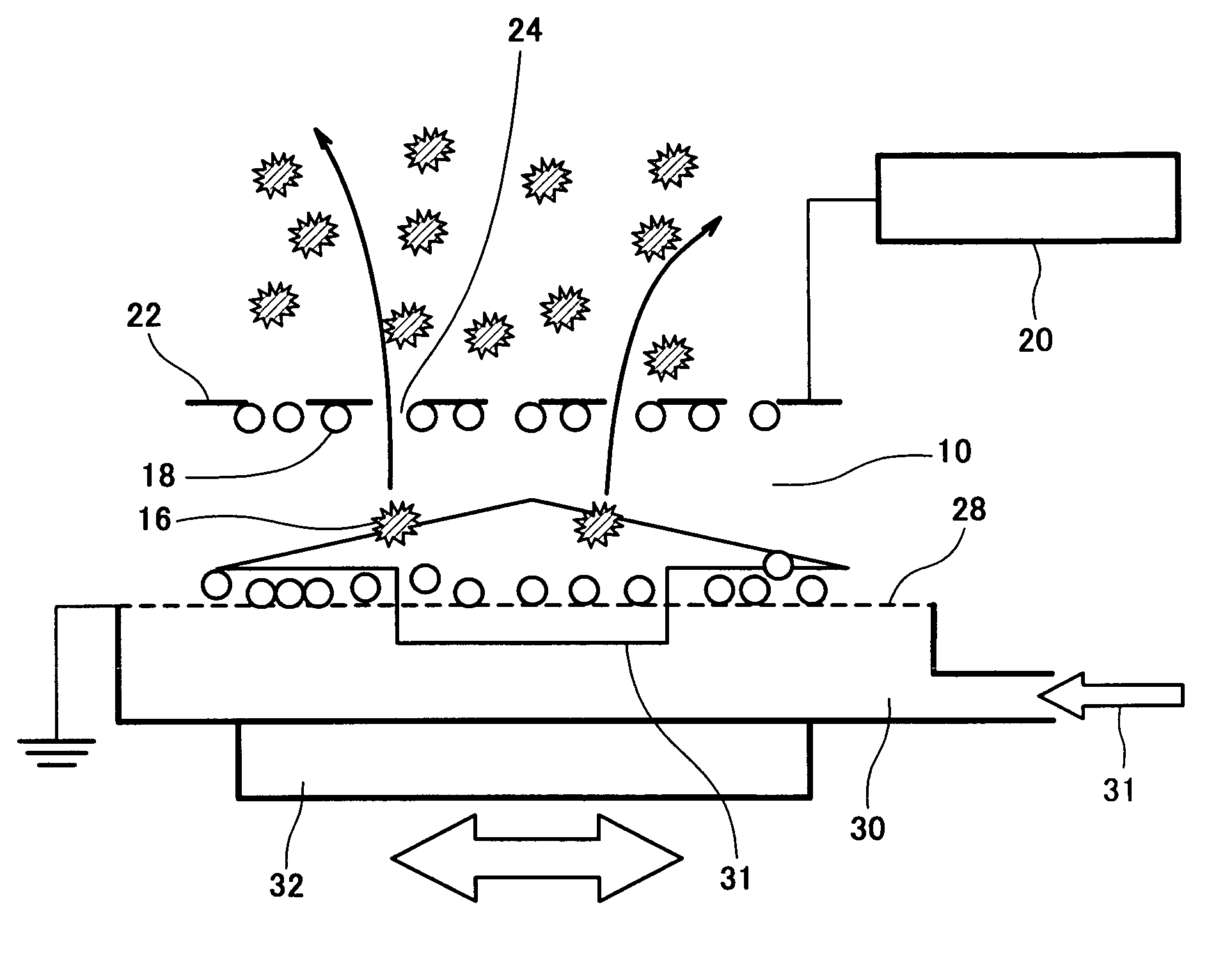Method for electrostatically separating particles, apparatus for electrostatically separating particles, and processing system
- Summary
- Abstract
- Description
- Claims
- Application Information
AI Technical Summary
Benefits of technology
Problems solved by technology
Method used
Image
Examples
experiment 1
[0077]The electrostatic separation was carried out under the following conditions using the apparatus configured as shown in FIG. 5. The dispersing air was supplied to a dispersing plate (layered sintered porous plate) as positive electrode installed on the bottom at a flow rate of 5 mm / sec, and the entire apparatus was subjected to vibration at an amplitude of 1.5 mm and at a frequency of 25 Hz, a d.c. power supply was connected to the negative electrode provided to be 20 mm distant from the bottom electrode and having meshes of 0.6 mm, a voltage was applied across the electrodes, and under an electric field strength of 0.5 kV / mm, the electrostatic separation was carried out. Under these conditions, using two kinds of coal ash (unburned component=conductive particle weight percentage: 4.2%, 2.3%) as the material, separation of the conductive particles (unburned component) and the insulating particles (ash) was conducted for 10 seconds. The result was that the insulating particles w...
experiment 2
[0078]The electrostatic separation was carried out under the following conditions using the apparatus configured as shown in FIG. 6. Dehumidified dispersing air (dew point:−4° C.) was supplied to a dispersing plate (layered sintered porous plate) as positive electrode installed on the bottom surface at a flow rate of 10 mm / sec, and the entire apparatus was subjected to horizontal vibration in the direction of the insulating particle recovery portion at an amplitude of 1.5 mm and at a frequency of 25 Hz, and four electrodes having meshes of 1 mm and distance of 20 mm between the electrodes were multi-layered above the bottom positive electrode. Among the four electrodes plus the bottom positive electrode, first, third, and fifth electrodes from the bottom were set as positive electrodes (ground potential), minus potential was applied to the second and fourth electrodes, and under the electric field strength between the electrodes set to 0.65 kV / mm, the electrostatic separation was ca...
experiment 3
[0079]The electrostatic separation was carried out under the following conditions using the apparatus configured as shown in FIGS. 7, 8, and 9. Dehumidified dispersing air (dew point:−4° C.) was supplied to the dispersing plate (layered sintered porous plate) as positive electrode installed on the bottom surface at a flow rate of 10 mm / sec, and the entire apparatus was subjected to horizontal vibration in the direction of the insulating particle recovery portion at an amplitude of 1.5 mm and at a frequency of 25 Hz, and four electrodes having meshes of 1 mm and distance of 20 mm between the electrodes were multi-layered above the bottom positive electrode (+). The inclination angle of the electrode was 25°. Among the four electrodes plus the bottom positive electrode, first, third, and fifth electrodes were set as positive electrodes (ground potential), minus potential was applied to the second and fourth electrodes, and under the electric field strength between the electrodes set t...
PUM
 Login to View More
Login to View More Abstract
Description
Claims
Application Information
 Login to View More
Login to View More - R&D
- Intellectual Property
- Life Sciences
- Materials
- Tech Scout
- Unparalleled Data Quality
- Higher Quality Content
- 60% Fewer Hallucinations
Browse by: Latest US Patents, China's latest patents, Technical Efficacy Thesaurus, Application Domain, Technology Topic, Popular Technical Reports.
© 2025 PatSnap. All rights reserved.Legal|Privacy policy|Modern Slavery Act Transparency Statement|Sitemap|About US| Contact US: help@patsnap.com



